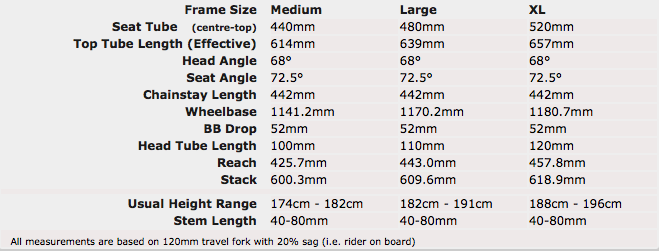Steel from Sheffield. Well, near enough anyway.
The Cotic Solaris is now officially known as the SolarisMAX and you can plug Plus tyres into it as well as regular 29er hoops.
The SolarisMAX now fits 29″ tyres up to 2.5″ tyres or 27.5″ tyres up to 3.0″.

Credit: Richard Baybutt Photography
Which wheel size is the bestest then?
Cotic have a good explanation: “29” wheel compatibility offers you a huge range of tyre options for carving corners and easy rolling speed, for every condition, and any purpose. You want fast? You’ve got fast. Any kind of fast you want. 275 Plus wheels with high volume tyres add comfort and traction advantages, with monster truck style rock smothering when you get into really rough terrain.”
>>> Cotic Rocket Max Platinum Plus first ride
The overall remit and geometry of the SolarisMAX remains pretty much as the previous Solaris; a high rolling hardtail with trail-centric geometry and an emphasis on “sweet handling” refined steel ride.

Credit: Richard Baybutt Photography
Having said that, the Large size has been tweaked ever so slightly; it’s slightly longer. The reach is now 443mm (up from 436mm). Apparently this is principally to “even out the steps between the medium and XL” frame sizes.
As you expect the biggest change is at the back of the bike where the dropouts are now Boost148 thru axle (with Syntace X-12 axles) and Cotic’s own MAX S-bends stays.

Credit: Richard Baybutt Photography
Oh, and there’s now routing for a stealth dropper seatpost too.
Cotic Solaris MAX geometry

Prices and stuff
SolarisMAX frame is £599. Full builds start from £1649 and top out at £3,399. Head on over to Cotic’s online configurator for a play.

Credit: Richard Baybutt Photography
A word from the owner
As ever with new stuff from Cotic, the news comes with plenty of nice personal insight from the designer and owner of Cotic himself, Cy Turner…
“Boost148 allowed me to squeeze those 3.0” Plus tyres into the same chainstay length as the previous bike. I’m a big fan of the Plus tyres on a hardtail; the Solaris was one of the first bikes to be compatible with the first generation tyres, but as things move on even the 2.8’s I originally designed around and grown a little, and clearance was getting marginal with some brands of tyre on the previous version of the frame.
“I wanted to make the bike work without trouble with all the latest tyres, so I went for full 3.0″ compatibility giving you plenty of options for your own bike. Personally, I’m still a fan of the 2.8” on the back to keep the weight down a little, especially now I can get hold of the Tough casing from WTB on the Ranger which is now an option on the complete bikes. This adds weight back in, but helps that balance of pressure vs tyre roll compromise better. We have the Tough casing option in stock now, so if you’re buying a bike or a wheelset, you just pop a note on the order saying that’s the version you’d like.
“For those of you getting a little tired of all these new standards, I do understand and I’ve tried to keep it simple.
“For a start, the bike uses a good old threaded 73mm BB shell, and despite the Boost148 rear spacing, it still runs fine if you have regular 50mm chainline cranks. There’s room for up to 32t chainrings on a standard chainline, but you’ll need to be using either the outer position of a dedicated double chainset (like the older Shimano M785 XT or similar), or a Boost 53mm chainline chainset for using chainrings up to 36t. What that should mean is that most people won’t need a new chainset when buying the a frame and transferring over your existing components.
“If someone has some nice 29er or Plus wheels which use a 142mm Hope hub, we have the Wolf Tooth Boostinator converter kits in stock as well. These use a wider end cap and disc rotor spacer, along with getting your wheel re-dish 3mm towards the disc side and means you don’t have to buy a whole new wheel to get yourself on your nice new SolarisMAX. The re-dish does give some of the advantages of Boost too, making the spoke tension more even on the rear wheel.”




